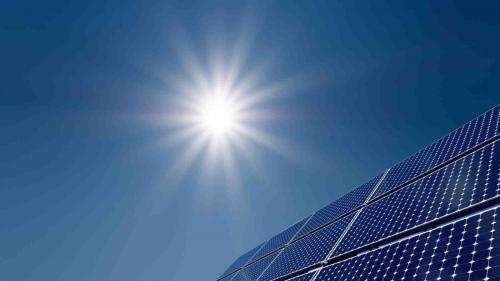Soaking up the sun

When it comes to solar power, it's a case of the more blue the better according to Victoria University of Wellington researcher Dr Jonathan Halpert.
Dr Halpert, a lecturer in Victoria's School of Chemical and Physical Sciences and an associate investigator at the MacDiarmid Institute for Advanced Materials and Nanotechnology, is leading a research team exploring new materials that will help solar panels make the most of a sunny day.
According to the team's initial research results, the key to increasing the efficiency of solar power is using smaller particles which can capture more light than those traditionally used in solar cells.
"Wavelengths of light have different amounts of energy associated with them—the bluer it is, the more energy is associated with that particle of light," says Dr Halpert. "So we're making nanocrystals that have broad absorption properties, allowing them to soak up all these different wavelengths, while losing less energy."
Dr Halpert says the best silicon-based technologies currently used in solar panels have power efficiency rates of around 21 percent, meaning a great deal of light-energy is lost as heat in the process.
However by using a combination of the existing technology and the Victoria team's new materials, much higher ratings could be achieved, says Dr Halpert.
But it's not just the efficiency of generating electrical currents that has sparked Dr Halpert's research into new solar materials—he also wants to make the technology more efficient economically.
"A lot of the materials that people use have toxic or very rare materials in them. We're trying to move away from toxic and rare to common, cheap and easy."
Dr Halpert says globally, demand is increasing for renewable energy technology, as countries replace traditional power sources with renewable ones.
"One of the big drivers for that is not just combatting global warming, but also improving the economics of it. A good deal of what makes up electricity costs is transmission.
"In general, it's not practical or safe to put power plants near cities, whereas solar can be put on people's rooftops.
"This means you can essentially build power plants on top of the city, eliminating many of the transmission costs."
Provided by Victoria University of Wellington










.jpg)









